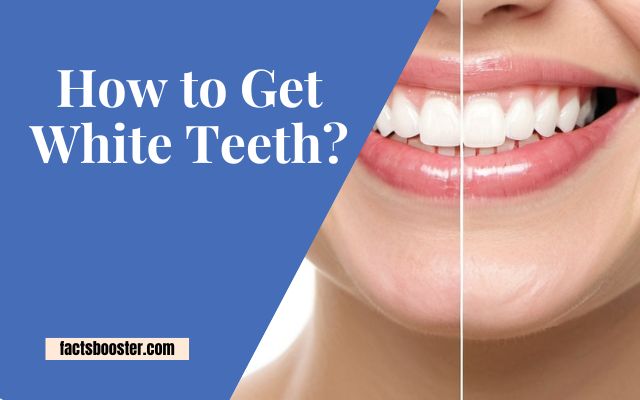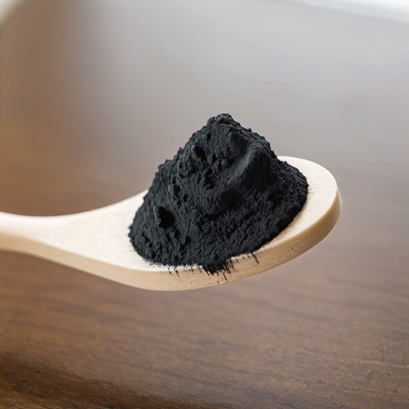How to get white teeth? Achieving a bright, white smile is a common goal for many people. White teeth not only enhance your appearance but also boost your confidence. With numerous products and methods available, knowing the best approach for whitening your teeth can be overwhelming. This comprehensive guide will explore various remedies and practices for achieving and maintaining white teeth.
Understanding Tooth Discoloration
Tooth discoloration is a common issue caused by various factors. Understanding the types and causes of tooth stains is the first step toward effectively whitening your teeth.
- Extrinsic Stains
These stains appear on the surface of the teeth and are typically caused by external factors such as smoking, drinking coffee or red wine, and consuming certain foods that stain. Poor oral hygiene can also contribute to the buildup of plaque and tartar, which can lead to discoloration.
- Intrinsic Stains
Intrinsic stains occur within the tooth and are usually the result of aging, trauma, excessive fluoride exposure, or the use of certain medications. These stains are more challenging to remove and often require professional intervention.
By identifying the cause of your tooth discoloration, you can choose the most effective whitening method.

How to Get White Teeth with These Remedies
There are several ways to whiten your teeth, ranging from home remedies to professional treatments. Here are some of the most effective options, along with their benefits and downsides:
1. Over-the-Counter Whitening Strips and Gels
Over-the-counter whitening strips and gels are popular and accessible teeth whitening products. They contain peroxide-based bleaching agents that help remove surface stains and lighten teeth. Typically, these products are applied to the teeth for a specified duration daily, often resulting in noticeable improvements within a few weeks.
Benefits:
- Easy to use and widely available.
- Affordable compared to professional treatments.
- Can provide noticeable results within a few weeks.
Downsides:
- May cause tooth sensitivity and gum irritation.
- Results are not as long-lasting as professional treatments.
- Limited effectiveness on deep stains and intrinsic discoloration.
Read more:
2. Whitening Toothpaste
Whitening toothpaste is an easy and affordable way to remove surface stains and maintain a bright smile. These toothpastes contain mild abrasives and chemical agents that help break down and polish away stains. While they may not provide dramatic results, they are effective for regular maintenance and preventing new stains from forming.
Benefits:
- Inexpensive and easy to incorporate into a daily routine.
- Helps maintain whiteness after professional treatments.
- Effective at removing surface stains and preventing new stains.
Downsides:
- Provides limited whitening effects; and mainly works on surface stains.
- Prolonged use of highly abrasive formulas may damage enamel.
- Results are gradual and less noticeable compared to other methods.
3. Activated Charcoal

Activated charcoal is a natural remedy that has gained popularity for its teeth-whitening properties. It works by absorbing surface stains and toxins from the teeth. To use activated charcoal, you can apply a small amount to your toothbrush and gently brush your teeth. However, it is essential to use this method sparingly, as excessive use can wear down tooth enamel. (1)
Benefits:
- Natural and chemical-free option.
- Affordable and easy to use at home.
- Can help remove surface stains effectively.
Downsides:
- Can be abrasive and damage tooth enamel with frequent use.
- Effectiveness is mainly on surface stains, not deep discoloration.
- Potential to cause tooth sensitivity or gum irritation if not used properly.
4. Hydrogen Peroxide and Baking Soda Paste
A mixture of hydrogen peroxide and baking soda is a powerful home remedy for whitening teeth. Hydrogen peroxide acts as a bleaching agent, while baking soda serves as a mild abrasive to remove surface stains. To create a paste, mix a small amount of hydrogen peroxide with baking soda and apply it to your teeth for a few minutes before rinsing thoroughly.
Benefits:
- Cost-effective and easy to prepare at home.
- Effective at removing surface stains and brightening teeth.
- Can provide noticeable results with regular use.
Downsides:
- May cause gum irritation and tooth sensitivity.
- Overuse can damage enamel and cause tooth erosion.
- Results may vary depending on the concentration of ingredients used.
5. Oil Pulling with Coconut Oil
Oil pulling is an ancient practice that involves swishing coconut oil around in your mouth for several minutes. This method is believed to help remove bacteria, plaque, and surface stains, promoting whiter teeth and improved oral hygiene. Coconut oil is preferred due to its pleasant taste and antibacterial properties. (2)
Benefits:
- Natural, safe, and chemical-free.
- Helps improve overall oral hygiene and reduces plaque buildup.
- Gentle on teeth and gums, with no risk of enamel damage.
Downsides:
- Requires consistent daily use for noticeable results.
- The effectiveness of teeth whitening is limited to removing surface stains.
- Results may take longer to appear compared to other methods.
6. Professional Teeth Whitening Treatments
Professional teeth whitening treatments are performed by dentists and offer the most effective and long-lasting results. These treatments use higher concentrations of bleaching agents than over-the-counter products and often involve light or laser technology to accelerate the whitening process. Although more expensive, professional treatments can dramatically whiten teeth in a short amount of time.
Benefits:
- Provides the most dramatic and long-lasting results.
- Quick procedure with noticeable improvements in one session.
- Customizable to individual needs and levels of discoloration.
Downsides:
- More expensive than at-home treatments.
- May cause temporary tooth sensitivity and gum irritation.
- Requires a dental visit and may not be covered by insurance.
7. Custom-Fit Whitening Trays
Custom-fit whitening trays are provided by dentists and tailored to fit your teeth perfectly. These trays are filled with a whitening gel and worn for a specified duration, usually a few hours a day or overnight. The close fit ensures even coverage and reduces the risk of irritation or gum sensitivity.
Benefits:
- Provides even and consistent coverage for effective whitening.
- Reduces the risk of gum irritation due to the custom fit.
- Can be used at home with professional guidance.
Downsides:
- More expensive than over-the-counter products.
- Results may take longer compared to in-office treatments.
- Requires a dental visit for tray fitting and initial consultation.
8. LED Teeth Whitening Kits
LED teeth whitening kits have become popular due to their convenience and effectiveness. These at-home kits combine whitening gels with LED light technology to enhance the whitening process. The light helps activate the bleaching agents in the gel, speeding up the removal of stains and providing quicker results. (3)
Benefits:
- Convenient and can be done at home.
- Faster results compared to some other at-home methods.
- Often comes with a lower cost than professional treatments.
Downsides:
- Effectiveness can vary based on the quality of the kit and the ingredients used.
- May cause temporary tooth sensitivity.
- Requires careful following of instructions to avoid gum irritation or uneven whitening.
By understanding the benefits and downsides of each method, you can choose the teeth-whitening remedy that best suits your needs and preferences.
Read more:
Best Practices for Maintaining White Teeth
Once you have achieved your desired level of whiteness, maintaining your results is essential. Here are some tips to keep your teeth white:
- Practice Good Oral Hygiene: Brushing your teeth at least twice a day and flossing regularly helps prevent plaque buildup and stains.
- Avoid Stain-Causing Foods and Drinks: Limit your intake of coffee, tea, red wine, and other foods that can stain your teeth. If you consume these, consider rinsing your mouth or brushing your teeth afterward.
- Use a Straw: When drinking stain-causing beverages, use a straw to minimize contact with your teeth.
- Regular Dental Check-Ups: Visit your dentist regularly for cleanings and check-ups to maintain oral health and address any staining issues early.
- Quit Smoking: Smoking is a leading cause of tooth discoloration and negatively impacts overall oral health. Quitting smoking can help prevent further staining.
Myths and Misconceptions About Teeth Whitening
There are many myths and misconceptions about teeth whitening. Here are a few to be aware of:
Myth 1: Whitening Damages Your Enamel
When done correctly, teeth whitening does not damage your enamel. Overuse of certain products or abrasive techniques can cause harm, but professional treatments and recommended at-home products are safe when used as directed.
Myth 2: Whitening Toothpaste Works Overnight
Whitening toothpaste can help remove surface stains over time, but it does not provide instant results. It requires consistent use to see noticeable improvements.
Myth 3: All Whitening Products Work the Same
Not all whitening products are created equal. Some are more effective than others, depending on the concentration of bleaching agents and the method of application. It’s important to choose a product that suits your specific needs and preferences.
Myth 4: Natural Remedies Are Completely Safe
While natural remedies can be effective, they are not without risks. For example, using acidic ingredients like lemon juice can erode enamel, and abrasive agents like baking soda can cause tooth sensitivity if overused.
Conclusion
Achieving and maintaining white teeth requires a combination of effective whitening methods and good oral hygiene practices. Whether you opt for over-the-counter products, natural remedies, or professional treatments, choosing a method that suits your needs and preferences is essential. By understanding the causes of tooth discoloration and following best practices, you can enjoy a bright, white smile and boost your confidence.


